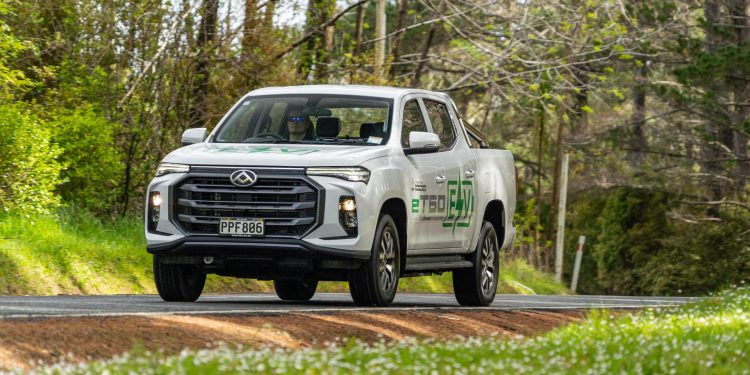2023 LDV e-T60 review
Words: Kyle Cassidy | Photos: Isaac Western
LDV’s e-T60 has struggled to gain traction in a ute segment obsessed with ultimate capability. Does a reduced price tag make it more appealing?
Electric powertrains have been adopted across the motoring spectrum, from small hatchbacks to large luxury SUVs.
There is however one segment that is lacking the electric choice, which would be the double cab ute.
It’s a rather popular segment here but these ‘work horses’ have notoriously long generational development cycles, and the majority of markets they sell in aren’t crying out for an electric option.
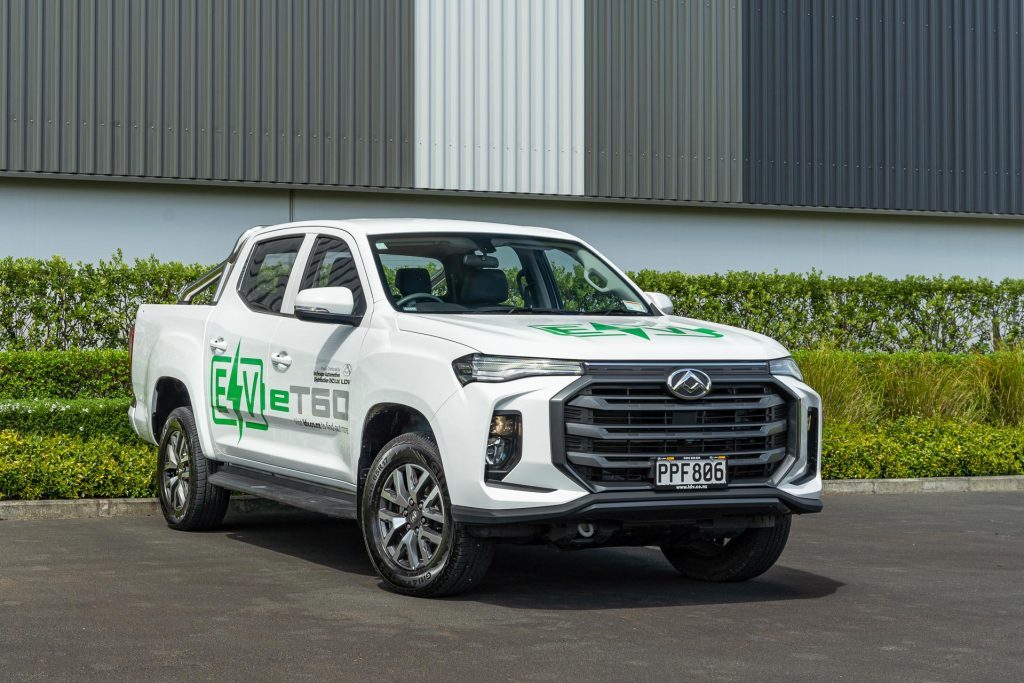
To make it clear, we are not referring to those full-size American pick-ups either. These are not available in right-hand drive, while only two electric models exist, the F-150 Lightning and the Rivian R1T.
Three, if you count the Hummer.
What local ‘demand’ there has been for a zero-emissions ute will likely taper off with the impending demise of the ‘ute tax’ and rebate.
When it comes to adapting/exploiting an opportunity, one should not underestimate the will of the Chinese manufacturers. LDV was the first and so far the only manufacturer able to offer an electric ute here, the e-T60, but take up has been slow.
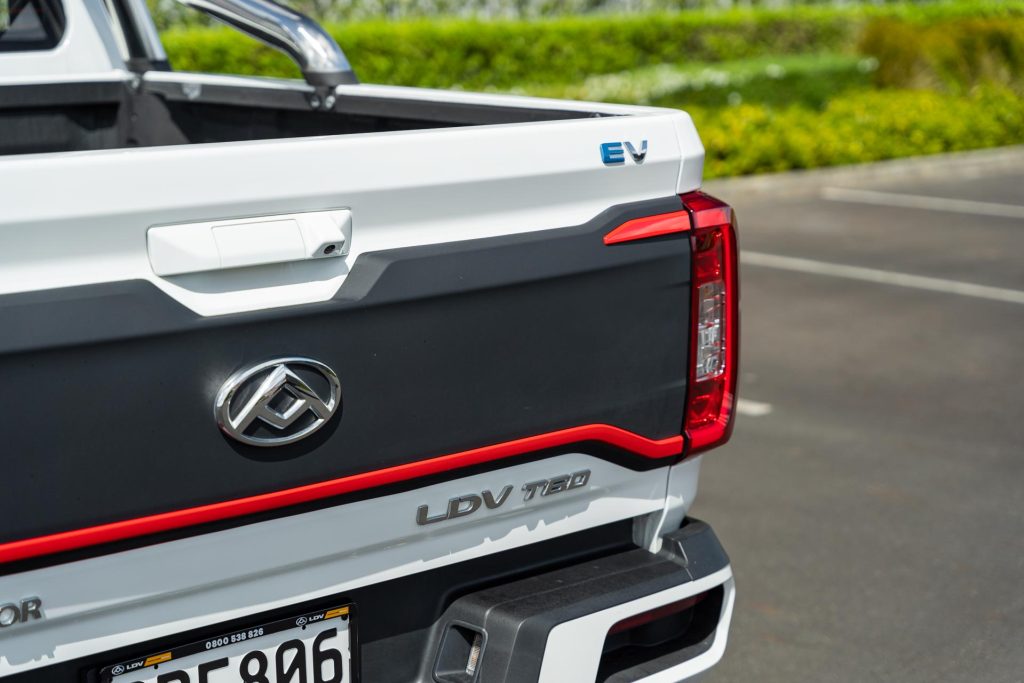
It has been for all the electric offerings in the commercial space. For reference, YTD September, just 228 commercial EVs have been registered. At least the e-T60 can claim top spot amongst those with 53 sold.
The total for the commercial sector is 31,413, and so EVs account for 0.17 per cent.
Standing in the way of better adoption of these electric commercials are cost and capability, and a perceived lack of ‘range’. As to the e-T60, it has been available at $79,990, making it eligible for the rebate.
Currently, LDV’s new local distributor Inchcape NZ (which also handles Subaru and SsangYong) is trying to spur some interest by reducing the price by a further $7015 to match the rebate.
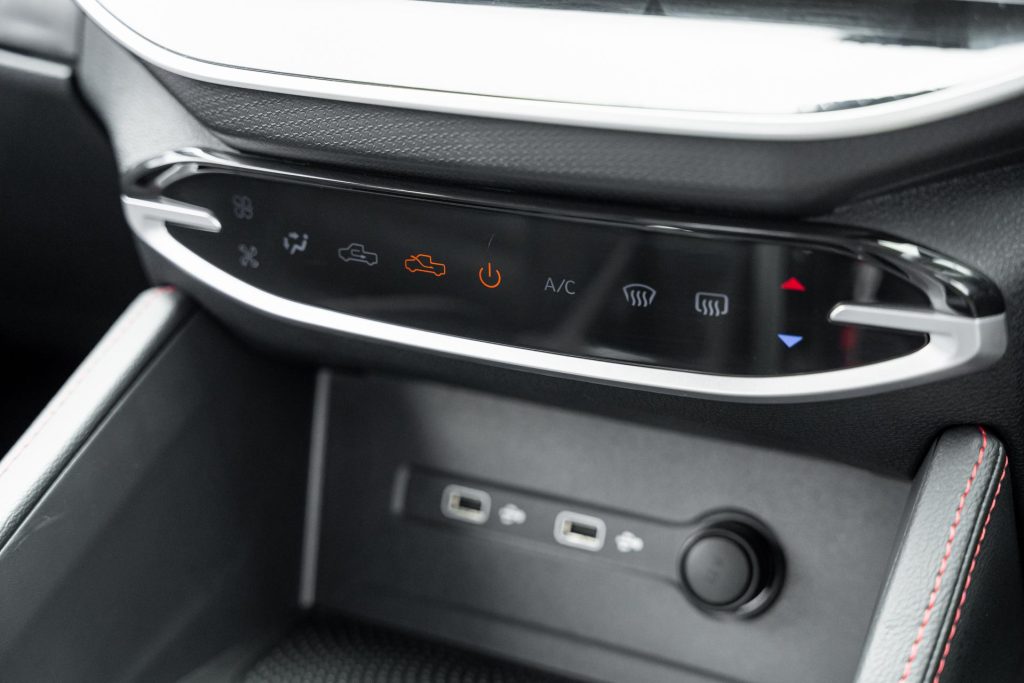
So buy this before the rebate is axed and it’ll cost $65,960. It’s probably worth mentioning this model is a whopping $93k in Australia, perhaps reflecting the true price of the vehicle.
But wait, there’s been more discounting. Since we drove this, LDV has further reduced the price to $56,990! And if you get one before the rebate goes, it’ll be $49,975 plus ORCs.
The T60 diesel ranges in price from $43k – $50k, but soon buyers won’t need to cough up $6900 in fees.
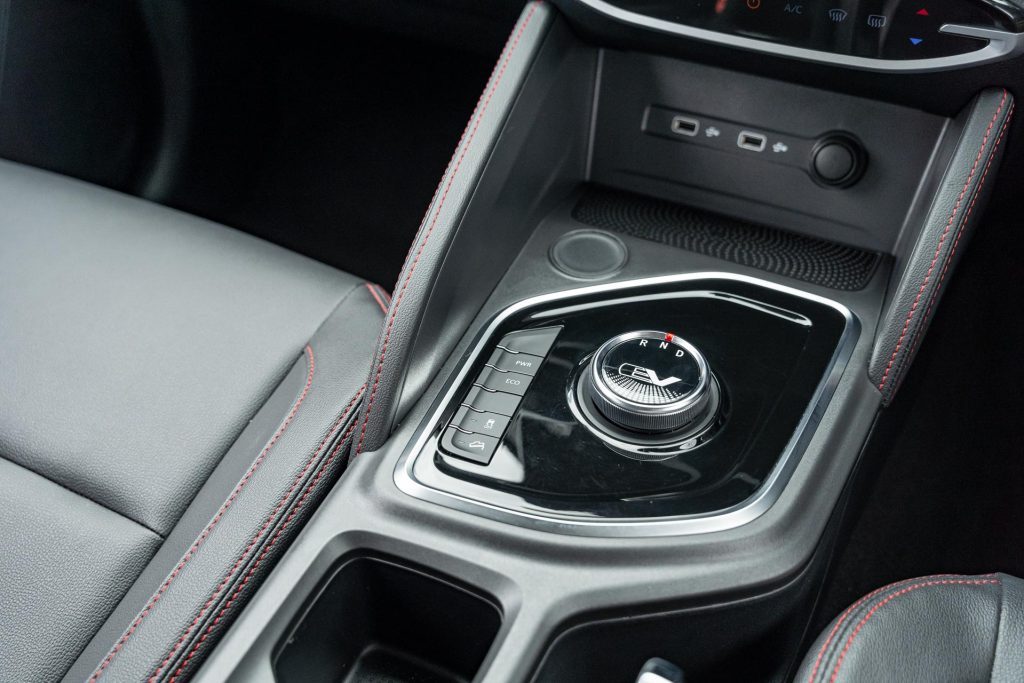
When there is both an electric and combustion version of a vehicle, it’s the battery powered model that boasts more torque. But not here as the e-T60 can only muster 130kW and 310Nm versus the 2.0-litre diesel’s 160kW and 500Nm.
It does deliver that torque more freely, no yawning turbolag here, and so it gets up to 60km/h rather briskly.
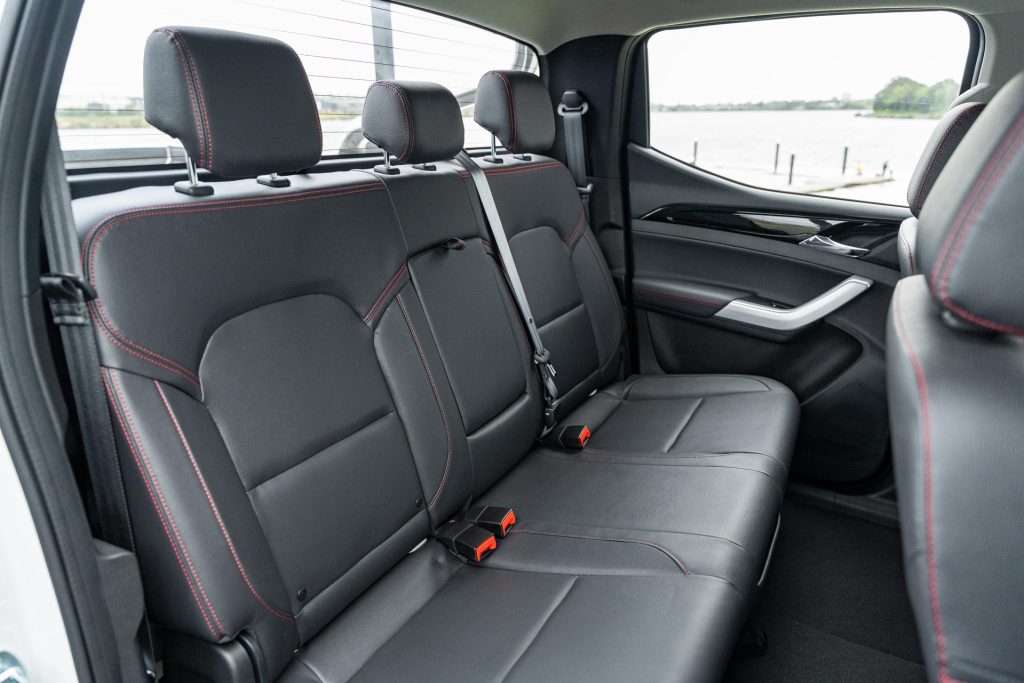
From there, the verve evaporates quickly with the e-T60 requiring a leisurely 14 seconds to attain 100km/h. And best wait for a downhill passing lane to overtake slower road users, the 80-120km/h measuring 12.8 secs and needing 375m of clear road ahead.
It’s a rear driver, the motor integrated into the rear axle, where the diff would usually be. And with the battery hanging down between the rails, the ground clearance and the ramp over angle are reduced.
It’s an urban-centric ute then, this one.
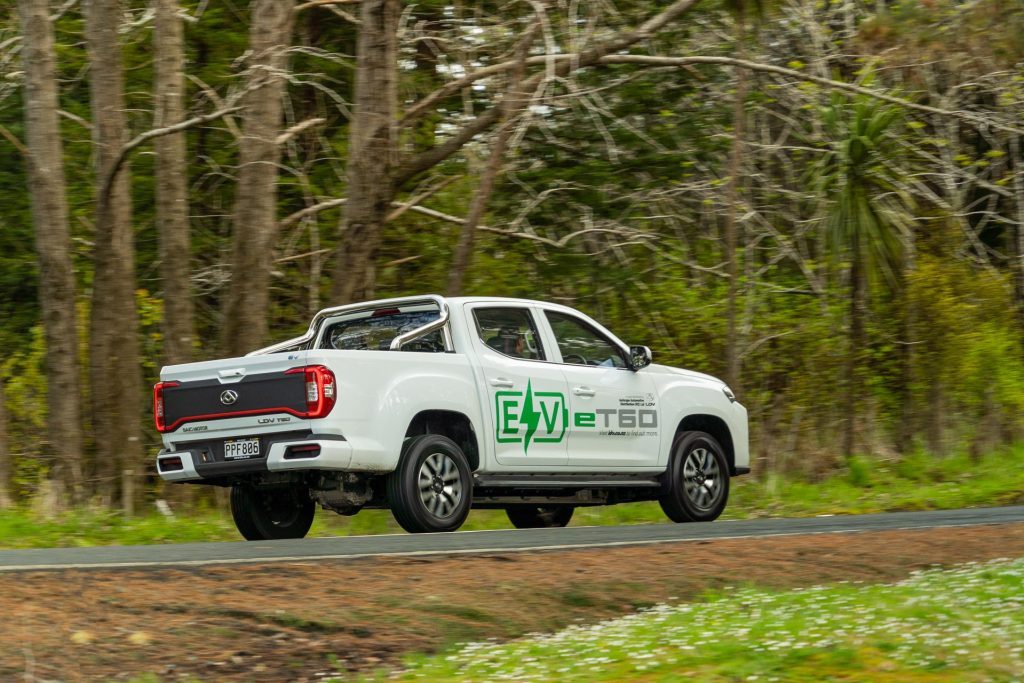
The e-T60 employs a big 88.5kWh battery pack, and the range figure listed is 325km determined by the WLTP test. Though this is the ‘city’ figure, usually the most favourable for an EV.
Like other ICE-based, commercial EV conversions we’ve driven, the e-T60 is power hungry.
The readout for the average energy consumption was stuck permanently on 29.9kWh/100km and changing the display to show instantaneous energy use, it’s not hard to see why; this is often maxed out at an indicated 60.0kWh/100km.
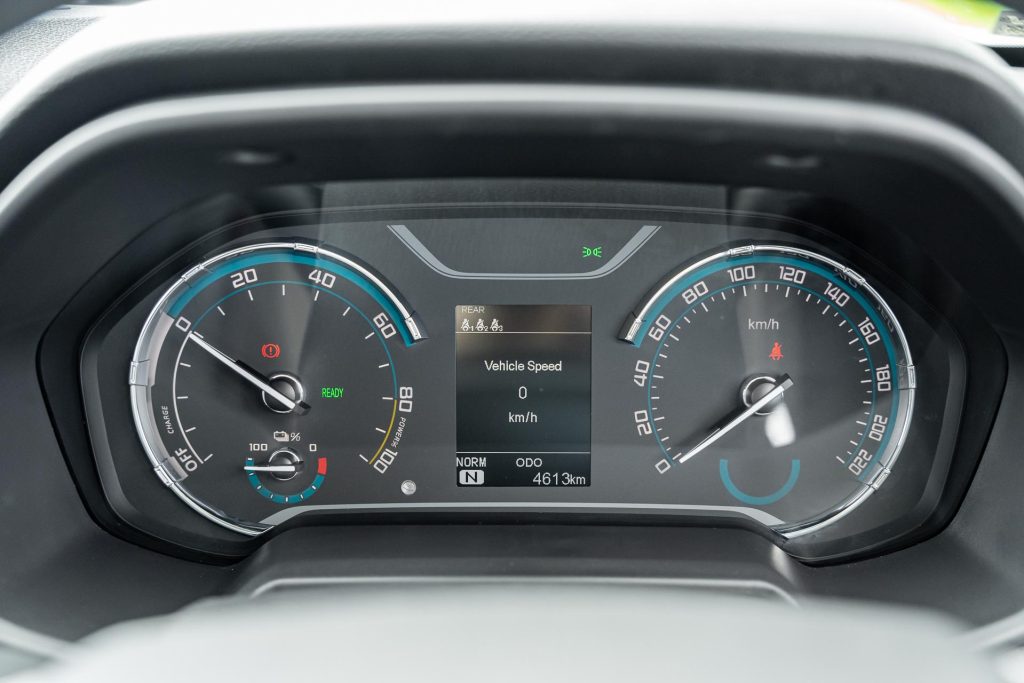
We didn’t do a big max range drive, but noted that around a quarter of the battery charge would disappear every 80km travelled.
And so the range figure at least seems accurate in terms of unladen urban use. A 12-hour charge overnight using the trickle charger (8A, 1.5kW) added 20kWh.
Given the energy use, you’ll be needing some form of AC wall box, LDV’s literature suggesting it can be cooked in five hours, presumably with a three-phase set-up.
LDV lists the weight of the e-T60 at 2300kg, quite remarkable given the 2.0-litre Ford Ranger weighs a similar amount. The quoted payload for the e-T60 is 750kg, and it can tow up to 1500kg.
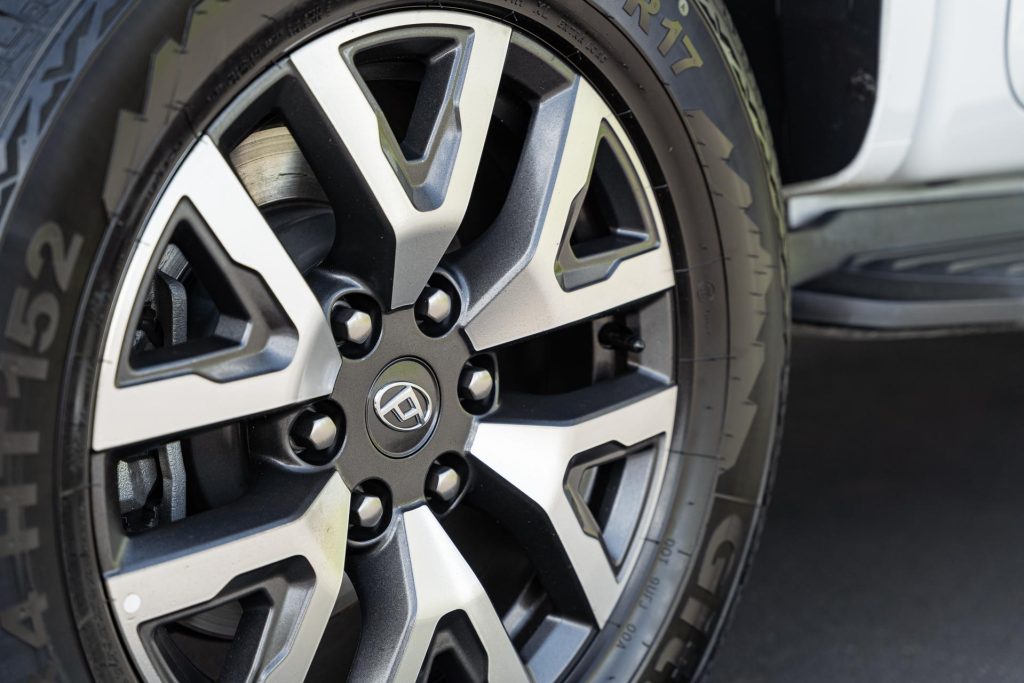
Expect energy use to soar and range to halve when towing however.
While out driving, this is refreshingly absent of any annoying safety warning bongs for a vehicle originating from China. This is because all active safety aids are absent.
There is however a screech when you select Reverse (it’s a bit hit and miss selecting gears here, firm pressure on the brake pedal required), a constant dinging when you open the door while the low speed pedestrian warning wails away loudly too.
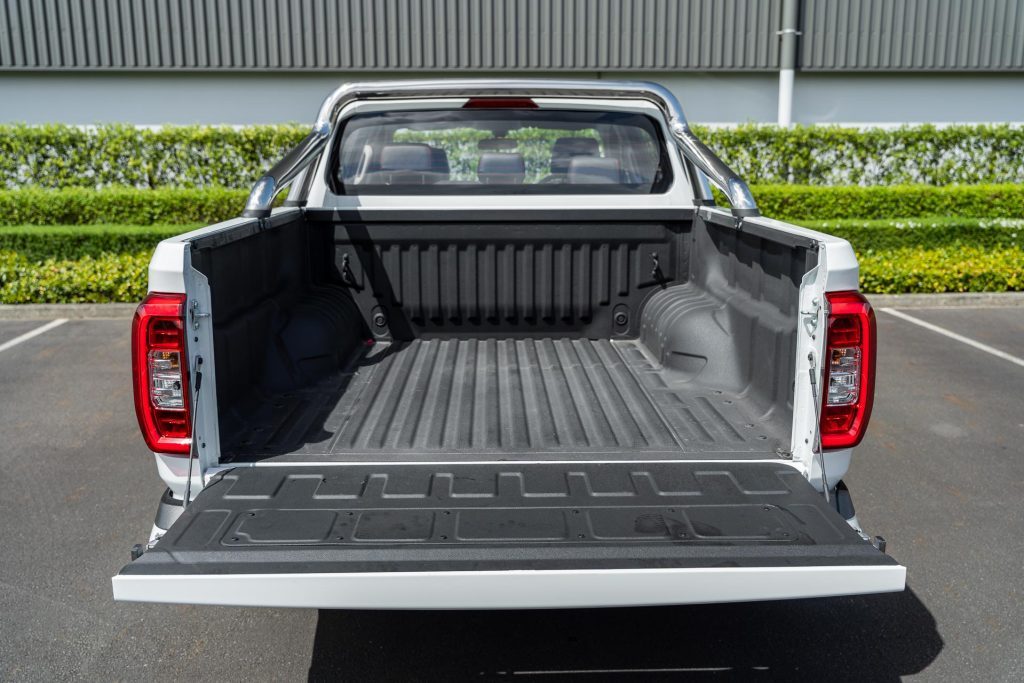
You get airbags, ESP and Isofix points in the rear. While the T60 has a five-star ANCAP rating (from testing conducted in 2017), this does not apply to the e-T60.
This lack of active safety will rule it out for corporate buyers, the biggest potential customers.
The cabin is a mix of surprise and disappointment. It’s big and spacious, the driving position sound and there’s room aplenty in the rear.
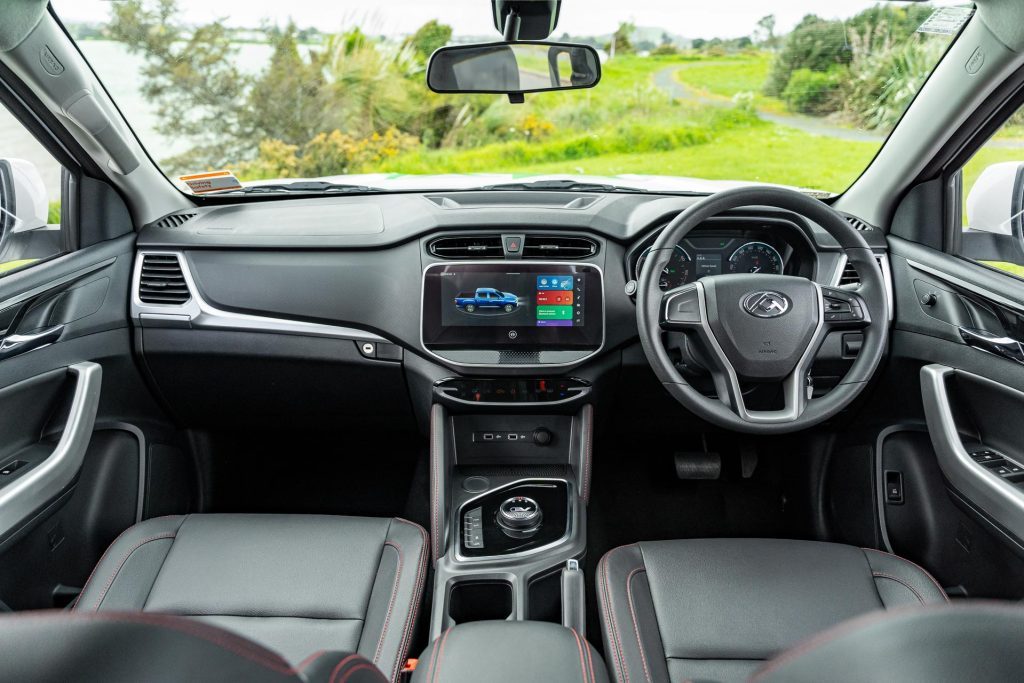
The infotainment screen looks vibrant but has limited functionality and is a bit fiddly in operation. While the ventilation controls look flash, reflections can render them hard to read.
Tough plastics are in abundance, the key is required to turn it on, and the dials are analogue. There is a small trip computer display in between the speedo and power gauge, relaying limited EV-related info.
This has an old school ute ride, bumping and shaking over anything but the smoothest road. It’s probably better with a load in the tray as it’s said to have the heavy duty suspension in place.
The steering is light which is good in town, as you do plenty of wheel twirling to manoeuvre this large truck about.
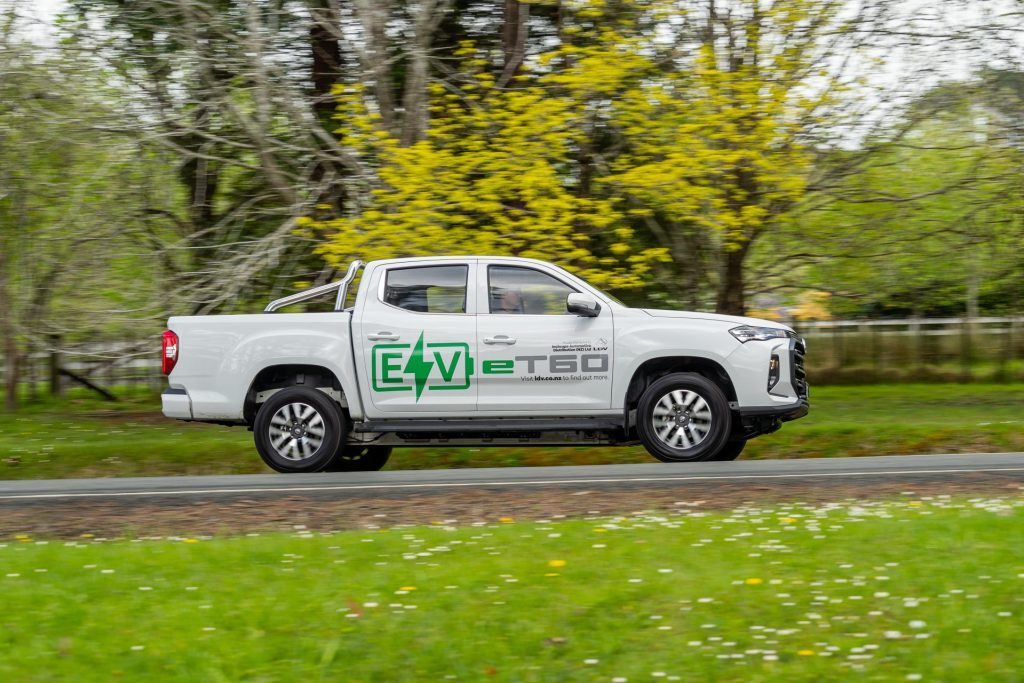
The brake regen is set to mild retardation, coming in progressively about a second and a half after lifting off the accelerator. The brake pedal itself feels okay in operation, neither too spongy or snatchy, and well behaved at parking speeds too.
On the highways, the steering is overly assisted and remote, while the ride is constantly unsettled over minor bumps.
The rear suspension struggles to cope with the weight of the motor on the rear axle. It also adds a pendulum effect in some corners – old 911 owners might like it then – while the roll doesn’t help either.
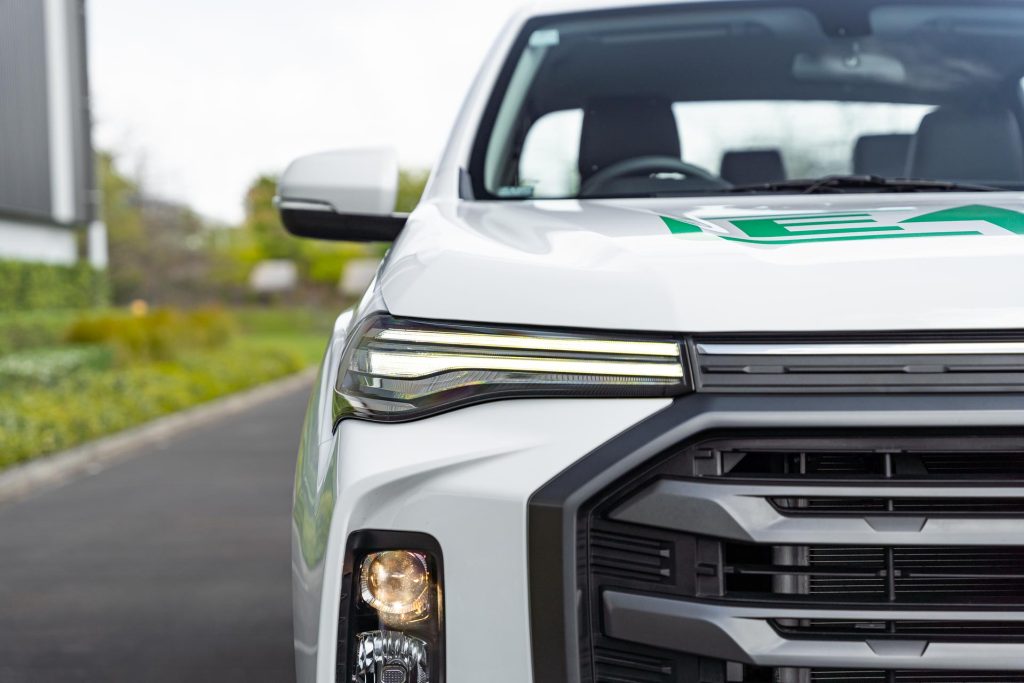
On a gravel road, the traction control works well to ground the power on the slippery surface, but the rear end struggles on the bumps while the cabin gets a good shake up.
With the premium reduced significantly, it might spur some people into action. Yet with the reduced capability and lack of safety creds, potential buyers for a ute of this kind are limited, reflected in the numbers sold.
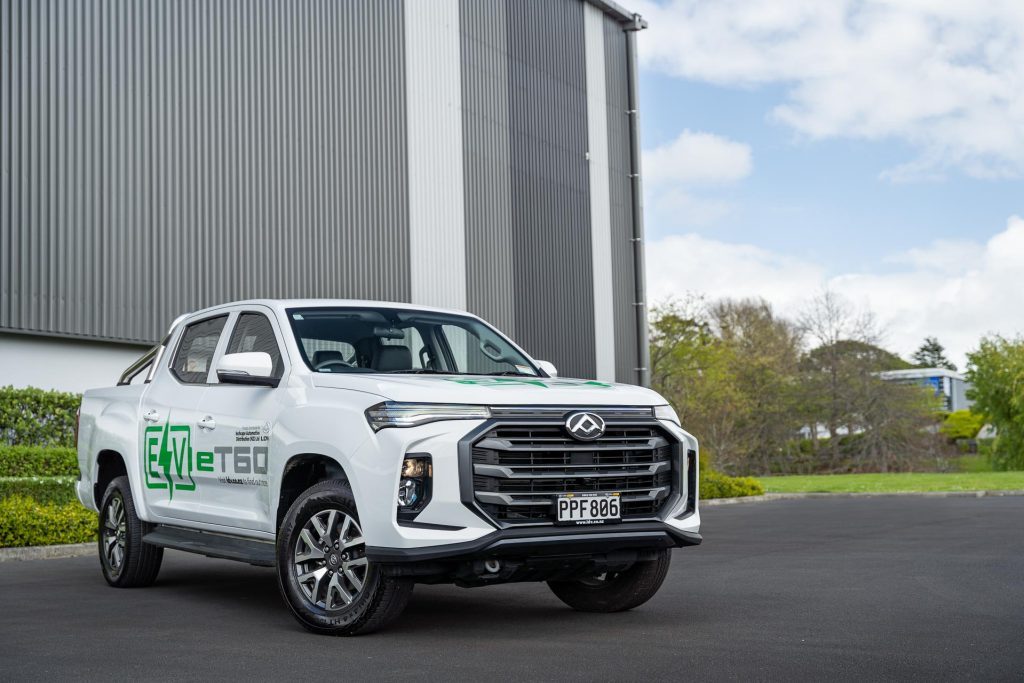
And the scrapping of the rebate soon won’t help either. Best wait for LDV’s second attempt at an EV ute due in 2024.
It promises a 600km range and AWD capability.
| Model | LDV e-T60 |
| Price | $56,990 |
| Clean Car Discount | Rebate – $7,015 |
| Motor | 130kW/310Nm |
| Battery | 88.5kWh |
| Range | 325km |
| Drivetrain | single-speed auto, RWD |
| Energy Use | 21.3kWh/100km |
| C02 Output | 0g/km |
| 0-100km/h | 14.02sec |
| 80-120km/h | 12.81sec (375m) |
| 100-0km/h | 43.76m |
| Stability systems | ABS, ESP |
| Safety | N/A |
| Turning Circle | 12.6m |
| Tow rating | 1500kg |
| Service intervals | 12 months, 30,000km |
| Warranty | 3yrs, 100,000km |
| ANCAP rating | not yet rated |
| Weight | 2300kg (claimed) |
This story first appeared in the November 2023 issue of NZ Autocar magazine.


